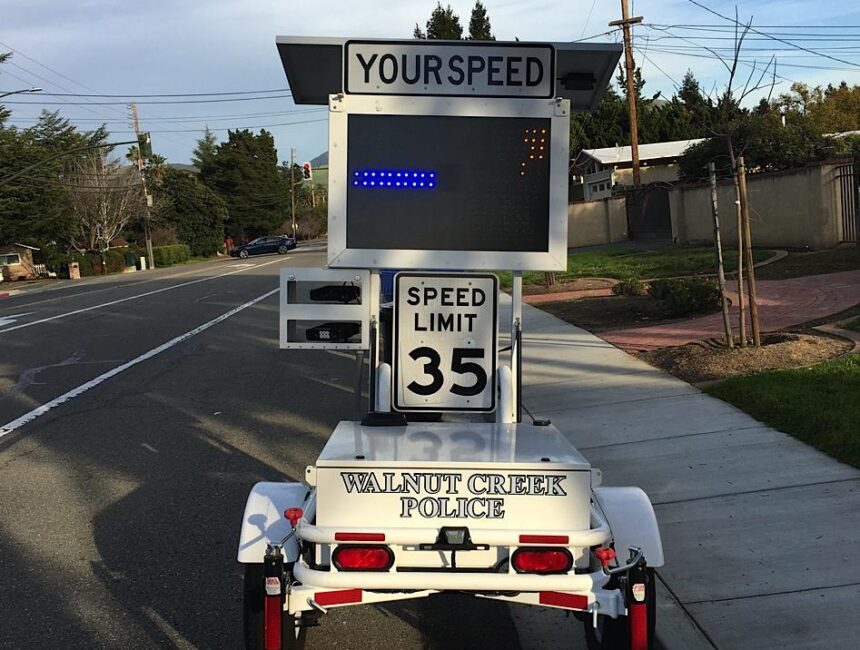Bill Seeks Automated License Plate Cameras to Enhance Safety in Road Construction Zones
In an effort to bolster safety measures for workers and motorists alike, lawmakers have introduced a new bill aimed at deploying automated license plate recognition cameras in road construction zones. The proposed legislation responds to alarming statistics highlighting the rising number of accidents in these areas, where reduced speed limits and changing traffic patterns often lead to confusion and danger. By implementing this advanced technology, supporters of the bill argue that it could deter reckless driving, enforce speed limits, and ultimately safeguard the lives of construction crews and passing vehicles. As discussions around the bill unfold, safety advocates hope this innovative approach will pave the way for a more secure driving experience in vulnerable zones across the state.
Legislative Proposal Aims to Enhance Safety Through Automated License Plate Recognition
A new legislative proposal has surfaced, aiming to leverage technology for the protection of workers in road construction zones. Automated license plate recognition (ALPR) systems will be installed in critical areas to monitor traffic and enhance safety measures. By capturing and analyzing vehicle data, this initiative seeks to deter reckless driving behaviors in construction sites, ensuring that workers can perform their jobs without the looming threat of accidents. In addition to promoting a safer working environment, the data collected will provide invaluable insights into traffic patterns and safety violations, paving the way for future enhancements in road safety regulations.
The implementation of these ALPR systems is expected to yield ample benefits, including:
- Real-Time monitoring: Continuous surveillance of traffic flow allows for immediate responses to erratic driving.
- Incident Reporting: Automated alerts can be sent to enforcement agencies to address violations promptly.
- Data Collection: Gathering historical data to inform future infrastructure decisions and prioritize safety improvements.
As lawmakers discuss this proposal, a recent survey revealed that a meaningful percentage of construction workers feel unsafe on the job due to traffic. The road to safer workspaces may soon benefit from the advances in technology that bring oversight and accountability to our highways.
Experts Advocate for Implementation of Technology to Deter Distracted Driving in Construction Zones
In a concerted effort to enhance safety in construction zones, experts are advocating for the integration of advanced technologies such as automated license plate cameras. These systems aim to deter distracted driving by capturing instances of reckless behavior, especially as road work continues to become a pressing concern for motorists and workers alike. Key features of the proposed technology include:
- Real-time monitoring: Constant surveillance to identify and record violations.
- Data analytics: Compilation of driving patterns to provide feedback on high-risk areas.
- Integration wiht law enforcement: immediate alerts for authorities to respond to reported incidents.
Proponents of this bill argue that utilizing such technology could significantly reduce the number of accidents in construction zones, which often see an uptick in traffic-related incidents as drivers become distracted. A preliminary study highlighted the need for proactive measures, revealing that construction zone collisions can lead to severe injuries and fatalities. To address these alarming statistics, the following impact metrics are being proposed for future evaluation:
| Metric | Current Rate | Post-Implementation Goal |
|---|---|---|
| Accident Rate | 500 per year | 300 per year |
| Injury Rate | 200 injuries | 100 injuries |
| Fatalities | 15 fatalities | 5 fatalities |
Recommendations for Effective Use of Automated Cameras to Ensure Compliance and Protect Workers
To maximize the effectiveness of automated cameras in construction zones, it is indeed essential to establish a comprehensive framework that focuses on both compliance and worker safety. First, integrating state-of-the-art high-resolution cameras equipped with night vision capabilities ensures continuous monitoring, regardless of lighting conditions. This technology should be augmented with real-time data analytics that can swiftly identify violations or unsafe behaviors,allowing for immediate corrective action. Furthermore, workers must be trained on the specific guidelines surrounding the operation of these systems, including how to interpret footage and engage with law enforcement when necessary.
Additionally, a robust system of communication and collaboration between construction crews, law enforcement, and local government is vital. Key recommendations include:
- Conducting regular audits and assessments of camera effectiveness.
- Engaging the community through public awareness programs that educate road users about the purpose of automated monitoring.
- Utilizing shared data platforms that allow stakeholders to access and analyze usage statistics and incident reports.
Implementing these measures will not only enhance safety in construction zones but also foster a culture of accountability and vigilance among all parties involved.
to Wrap It Up
the proposed bill advocating for the installation of automated license plate recognition cameras in road construction zones marks a significant step toward enhancing safety for both workers and drivers. By leveraging technology to monitor traffic and enforce regulations,officials aim to reduce accidents and ensure compliance with speed limits in these hazardous areas. As discussions continue and the potential implications are evaluated, stakeholders from various sectors—including transportation, labour, and public safety—will be closely watching the developments. If passed, this initiative could set a precedent for how technology can be utilized to improve safety and efficiency on the roadways, ultimately fostering a safer driving environment for everyone.









